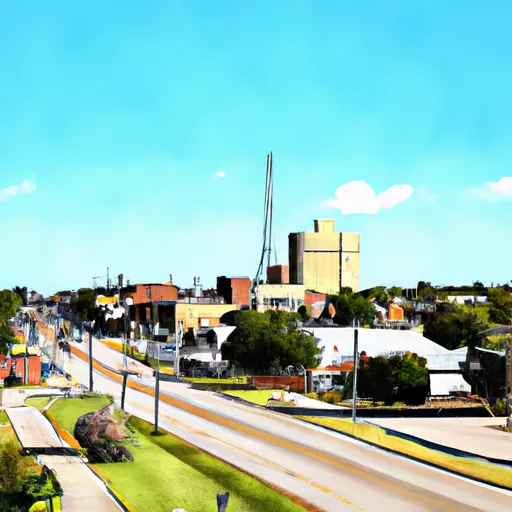-
 Snoflo Premium
Snoflo Premium
Get unlimited access to all our content
With no Ad interruptions! - Start Your Free Trial Login with existing account
Moulton
Eden Index
Climate
7.7
•
Recreation
2.8
•
Community
1.8
•
Safeguard
4.5/10

Moulton, Texas is a small town located in Lavaca County, in the southeastern part of the state. The climate in Moulton is considered humid subtropical, characterized by hot summers and mild winters. Summers are typically hot and humid with temperatures averaging in the high 90s (Fahrenheit), while winters are mild with average temperatures in the 50s.
The town is situated in an area with numerous hydrology constituents. The Navidad River flows through Moulton, providing opportunities for fishing, kayaking, and other water-based activities. The region also has several creeks and ponds that add to the hydrological diversity.
Moulton offers various outdoor recreation opportunities. The town has a public park with picnic areas, playgrounds, and sports fields, perfect for family outings and outdoor gatherings. The nearby Lavaca River provides additional opportunities for fishing and boating. Hunting is also popular in the surrounding area, with deer, hogs, and game birds being common hunting targets.
In conclusion, Moulton, Texas, offers a humid subtropical climate, hydrological diversity with the Navidad River and other water bodies, and outdoor recreation opportunities such as fishing, boating, hunting, and park activities.
What is the Eden Index?
The Snoflo Eden Index serves as a comprehensive rating system for regions, evaluating their desirability through a holistic assessment of climate health, outdoor recreation opportunities, and natural disaster risk, acknowledging the profound impact of these factors on livability and well-being.
Climate Health Indicator (CHI): 7.7
Moulton receives approximately
937mm of rain per year,
with humidity levels near 90%
and air temperatures averaging around
21°C.
Moulton has a plant hardyness factor of
9, meaning
plants and agriculture in this region tend to thrive here all year round.
By considering the ideal temperature range, reliable water supplies, clean air, and stable seasonal rain or snowpacks, the Climate Health Indicator (CHI) underscores the significance of a healthy climate as the foundation for quality living.
A healthy climate is paramount for ensuring a high quality of life and livability in a region, fostering both physical well-being and environmental harmony. This can be characterized by ideal temperatures, reliable access to water supplies, clean air, and consistent seasonal rain or snowpacks.
Weather Forecast
Streamflow Conditions
Lavaca
Area Rivers
Lavaca
Snowpack Depths
Lavaca
Reservoir Storage Capacity
Lavaca
Groundwater Levels
Recreational Opportunity Index (ROI): 2.8
The Recreational Opportunity Index (ROI) recognizes the value of outdoor recreational options, such as parks, hiking trails, camping sites, and fishing spots, while acknowledging that climate plays a pivotal role in ensuring the comfort and consistency of these experiences.
Access to outdoor recreational opportunities, encompassing activities such as parks, hiking, camping, and fishing, is crucial for overall well-being, and the climate plays a pivotal role in enabling and enhancing these experiences, ensuring that individuals can engage in nature-based activities comfortably and consistently.
Camping Areas
| Campground | Campsites | Reservations | Toilets | Showers | Elevation |
|---|---|---|---|---|---|
| Coleto Creek Park | 58 | 119 ft | |||
| Hub City RV Park | None | 311 ft | |||
| Cuero City Park | 10 | 214 ft | |||
| Yoakum City Park | 25 | 341 ft | |||
| Vernon L Richards Riverbend Park | 19 | 302 ft | |||
| Green Dickson Park | 12 | 370 ft | |||
| IB Magee Beach County Park | 75 | 6 ft | |||
| Hallettsville City Park | 17 | 249 ft | |||
| Refugio City Park | 15 | 25 ft | |||
| Goose Island State Park | 100 | 7 ft |
Nearby Fishing
Nearby Ski Areas
Catastrophe Safeguard Index (CSI):
The Catastrophe Safeguard Index (CSI) recognizes that natural disaster risk, encompassing floods, fires, hurricanes, and tornadoes, can drastically affect safety and the overall appeal of an area.
The level of natural disaster risk in a region significantly affects safety and the overall livability, with climate change amplifying these risks by potentially increasing the frequency and intensity of events like floods, fires, hurricanes, and tornadoes, thereby posing substantial challenges to community resilience and well-being.
Community Resilience Indicator (CRI): 1.8
The Community Resilience Indicator (CRI) recognizes that education, healthcare, and socioeconomics are crucial to the well-being of a region. The CRI acknowledges the profound impact of these elements on residents' overall quality of life. By evaluating educational resources, healthcare accessibility, and economic inclusivity, the index captures the essential aspects that contribute to a thriving community, fostering resident satisfaction, equity, and social cohesion.

